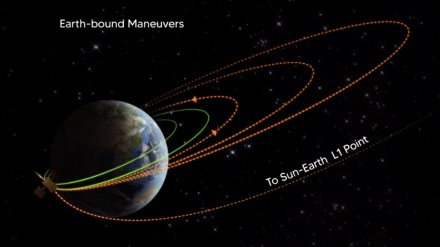The Indian Space Research Organisation (ISRO) on Monday informed that the Aditya-L1 solar mission spacecraft of India has commenced collecting data that will assist scientists analyse the behaviour of particles surrounding our planet Earth.
ISRO said that the sensors of an instrument on board Aditya-L1 have begun measuring supra-thermal and energetic ions and electrons at distances greater than 50,000 km from Earth.
“This data helps scientists analyse the behaviour of particles surrounding Earth,” the ISRO posted on social media platform X.
About STEPS
The Supra Thermal & Energetic Particle Spectrometer (STEPS) instrument is a part of the Aditya Solar Wind Particle EXperiment (ASPEX) payload.
“These STEPS measurements will persist during the cruise phase of the Aditya-L1 mission as it progresses toward the Sun-Earth L1 point,” the space agency said and added that “they will continue once the spacecraft is positioned in its intended orbit”, ISRO said.
Data gathered near L1 would not only furnish insights into the origin, acceleration, and anisotropy of solar wind but also space weather phenomena.
The Physical Research Laboratory (with support from the Space Application Centre) developed STEPS. On September 2, ISRO launched Aditya-L1 using a PSLV-C57 rocket.
On September 10, at a distance more than 50,000 km from our planet, STEPS was activated. It includes six sensors, each observing in different directions. These sensors are measuring supra-thermal and energetic ions (ranging from 20 keV/nucleon to 5 MeV/nucleon). Additionally, they are also measuring electrons exceeding 1 MeV.
To study the Sun, the Aditya-L1 spacecraft carries a total of seven different payloads. Four will observe the light from the Sun, and the three will measure in situ parameters of the plasma and magnetic fields.
This is India’s first solar observatory mission.
